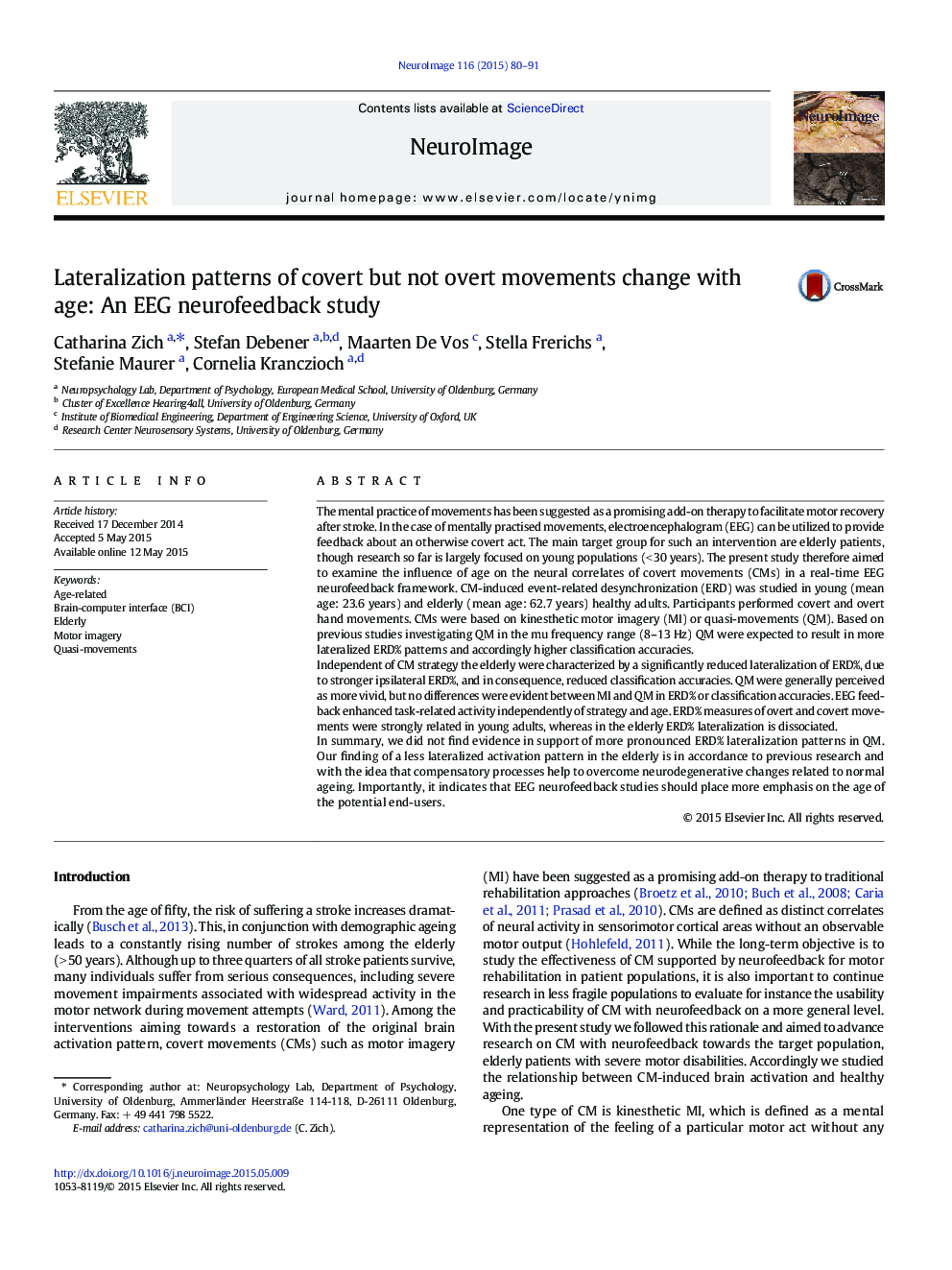| Article ID | Journal | Published Year | Pages | File Type |
|---|---|---|---|---|
| 6024883 | NeuroImage | 2015 | 12 Pages |
â¢Normal ageing is related to less lateralized brain activity during covert movements.â¢Quasi-movements and kinaesthetic motor imagery are comparable.â¢Neurofeedback enhances task-specific brain activity independent of age.â¢Contralateral activities during covert and overt movements are strongly correlated.
The mental practice of movements has been suggested as a promising add-on therapy to facilitate motor recovery after stroke. In the case of mentally practised movements, electroencephalogram (EEG) can be utilized to provide feedback about an otherwise covert act. The main target group for such an intervention are elderly patients, though research so far is largely focused on young populations (<Â 30Â years). The present study therefore aimed to examine the influence of age on the neural correlates of covert movements (CMs) in a real-time EEG neurofeedback framework. CM-induced event-related desynchronization (ERD) was studied in young (mean age: 23.6Â years) and elderly (mean age: 62.7Â years) healthy adults. Participants performed covert and overt hand movements. CMs were based on kinesthetic motor imagery (MI) or quasi-movements (QM). Based on previous studies investigating QM in the mu frequency range (8-13Â Hz) QM were expected to result in more lateralized ERD% patterns and accordingly higher classification accuracies.Independent of CM strategy the elderly were characterized by a significantly reduced lateralization of ERD%, due to stronger ipsilateral ERD%, and in consequence, reduced classification accuracies. QM were generally perceived as more vivid, but no differences were evident between MI and QM in ERD% or classification accuracies. EEG feedback enhanced task-related activity independently of strategy and age. ERD% measures of overt and covert movements were strongly related in young adults, whereas in the elderly ERD% lateralization is dissociated.In summary, we did not find evidence in support of more pronounced ERD% lateralization patterns in QM. Our finding of a less lateralized activation pattern in the elderly is in accordance to previous research and with the idea that compensatory processes help to overcome neurodegenerative changes related to normal ageing. Importantly, it indicates that EEG neurofeedback studies should place more emphasis on the age of the potential end-users.
